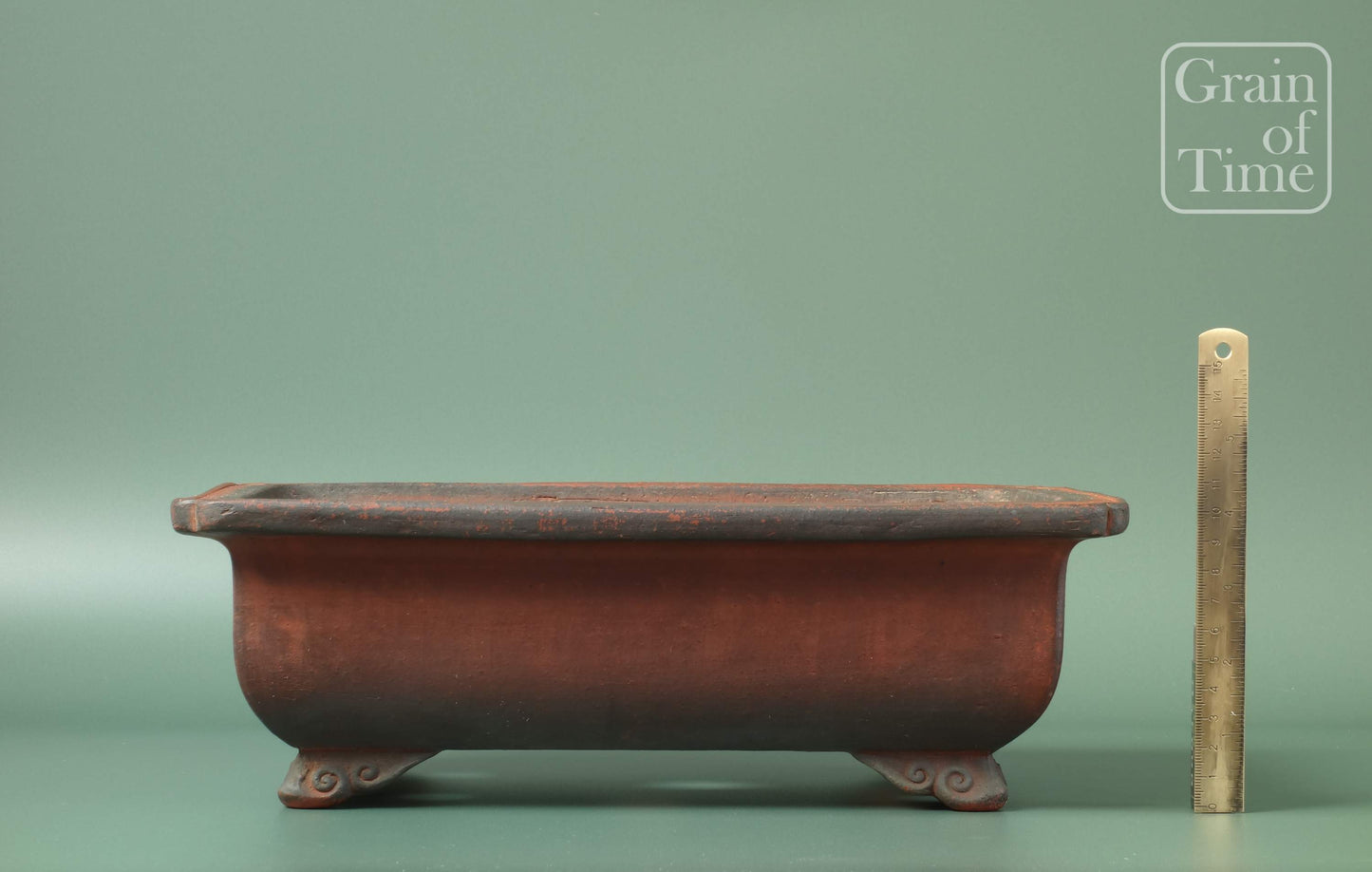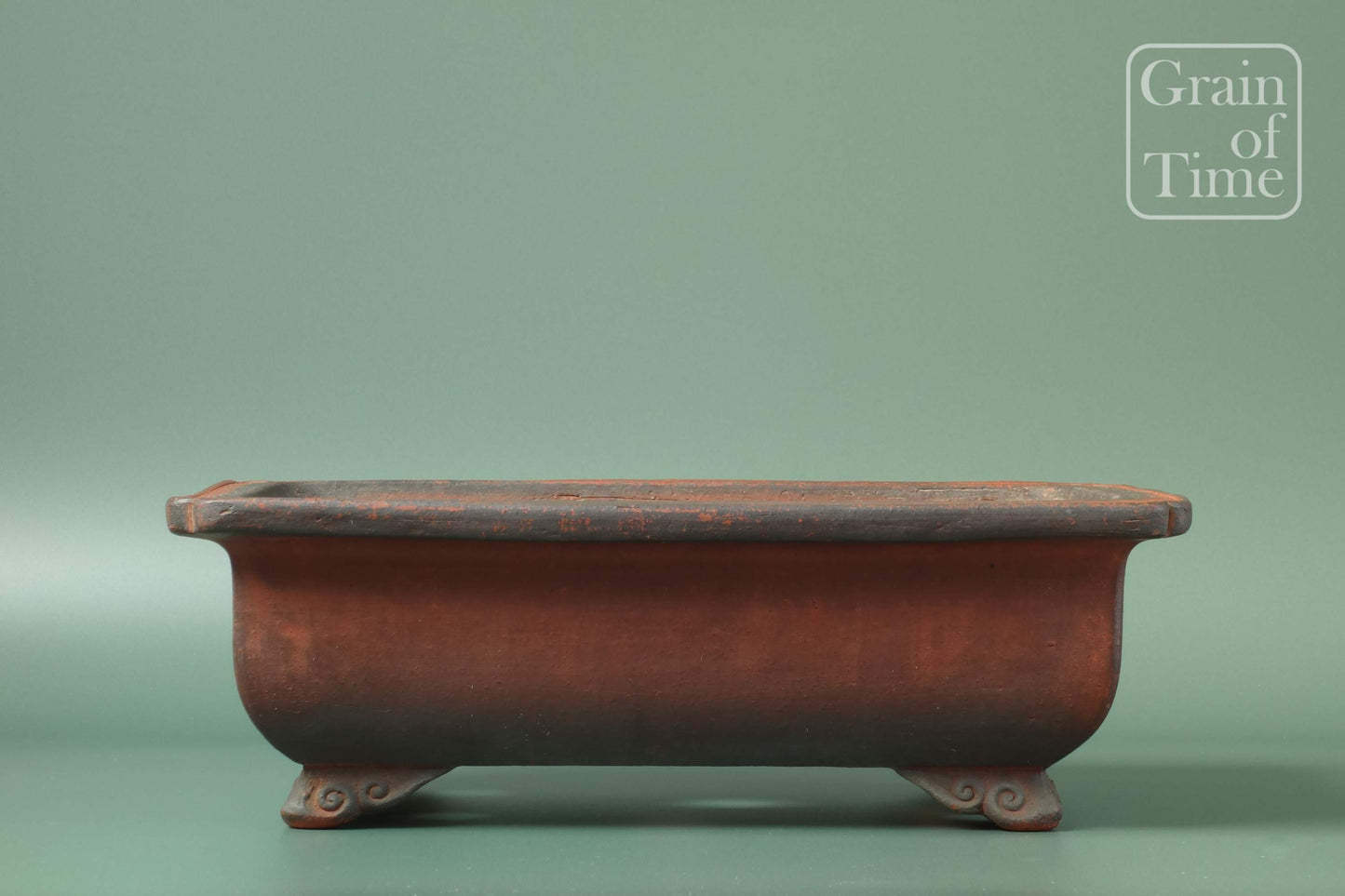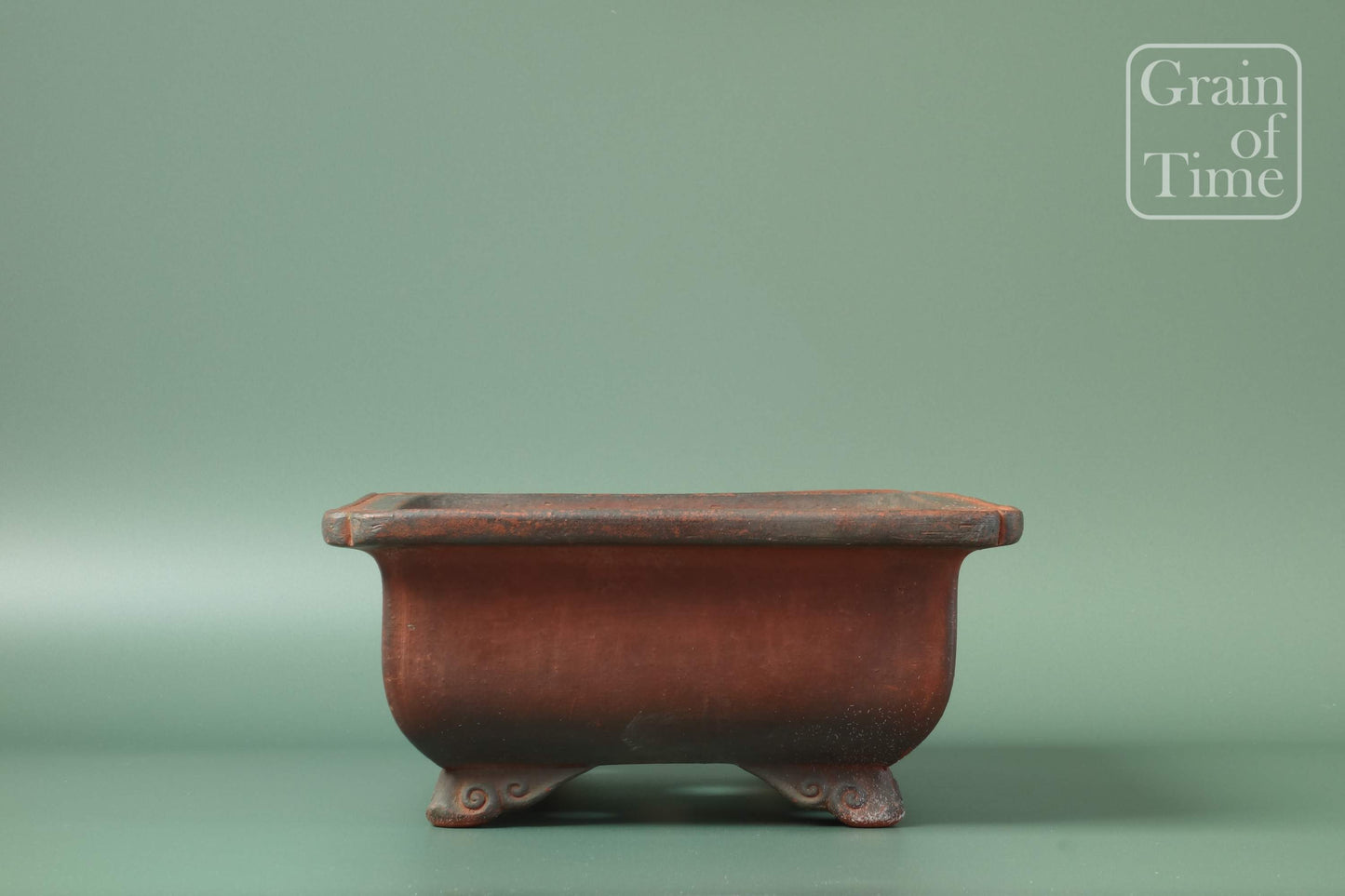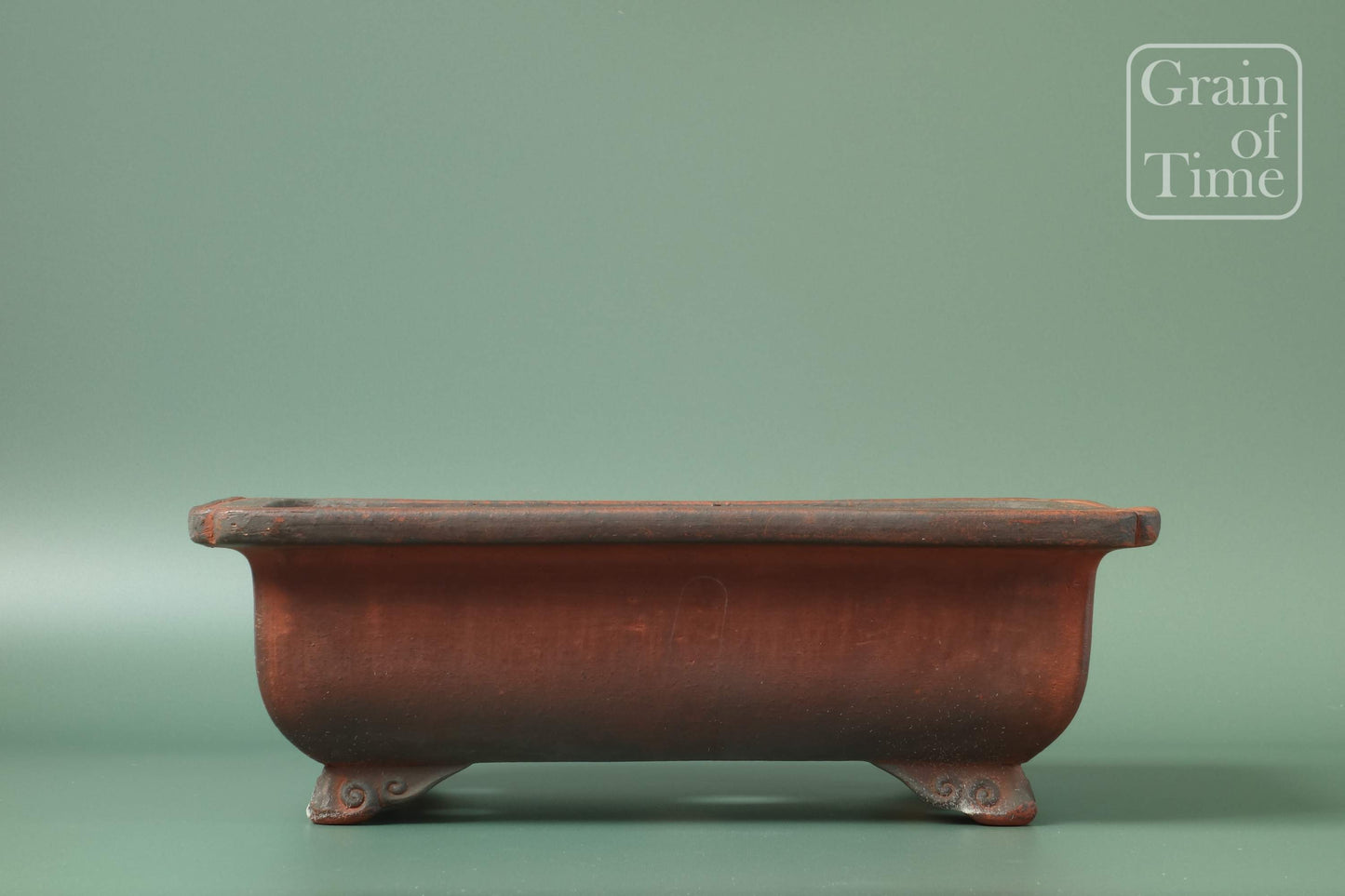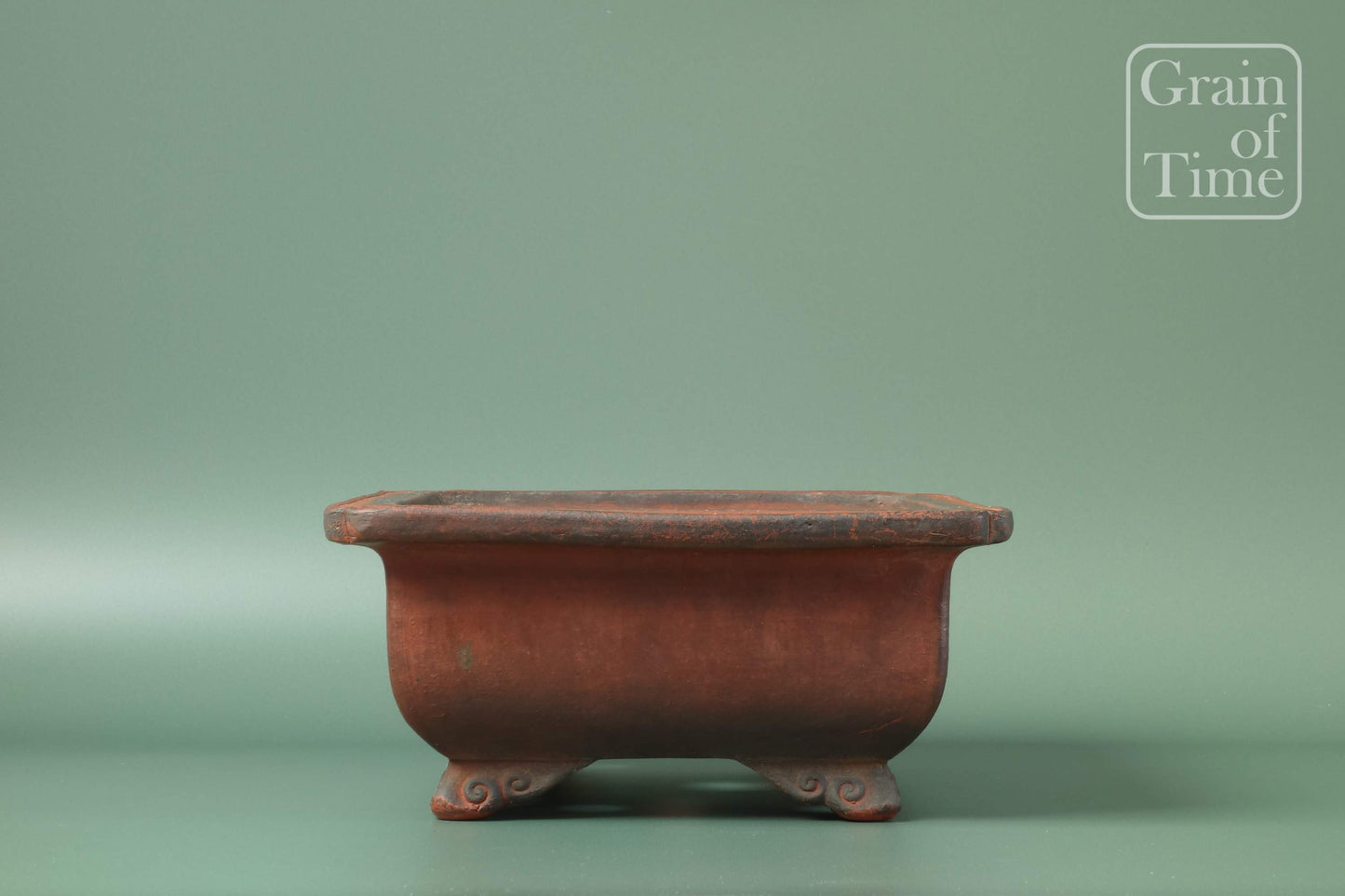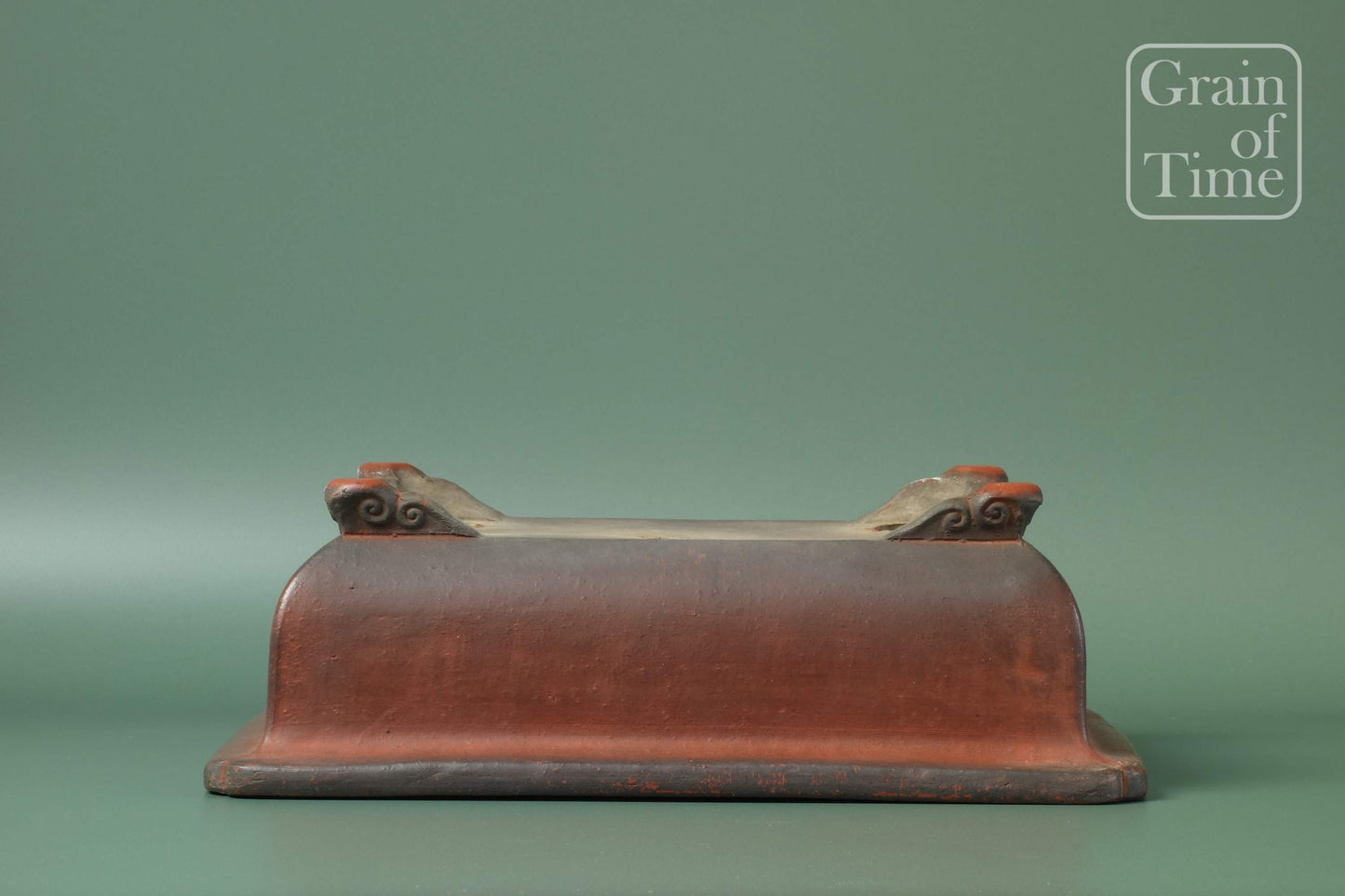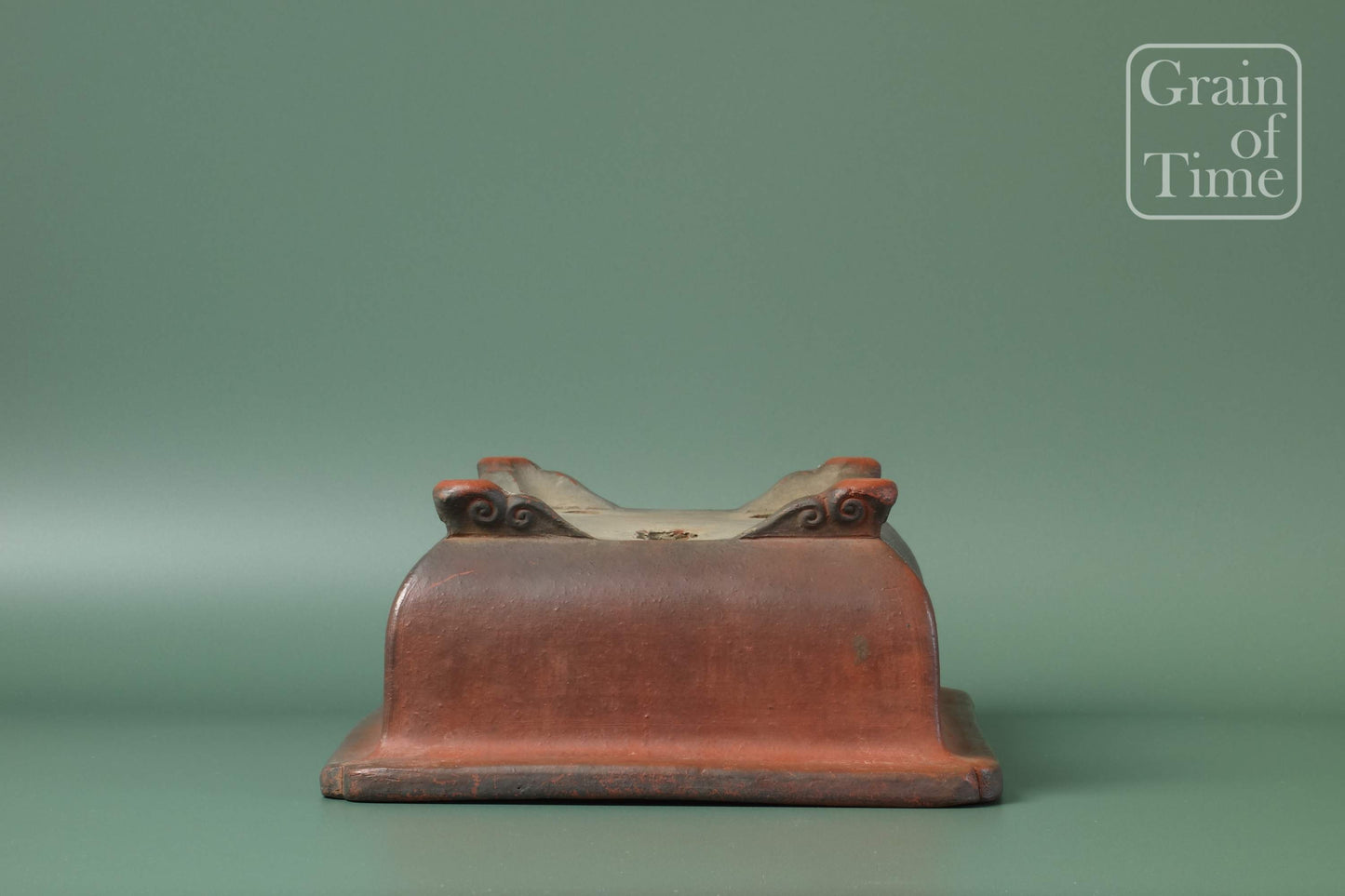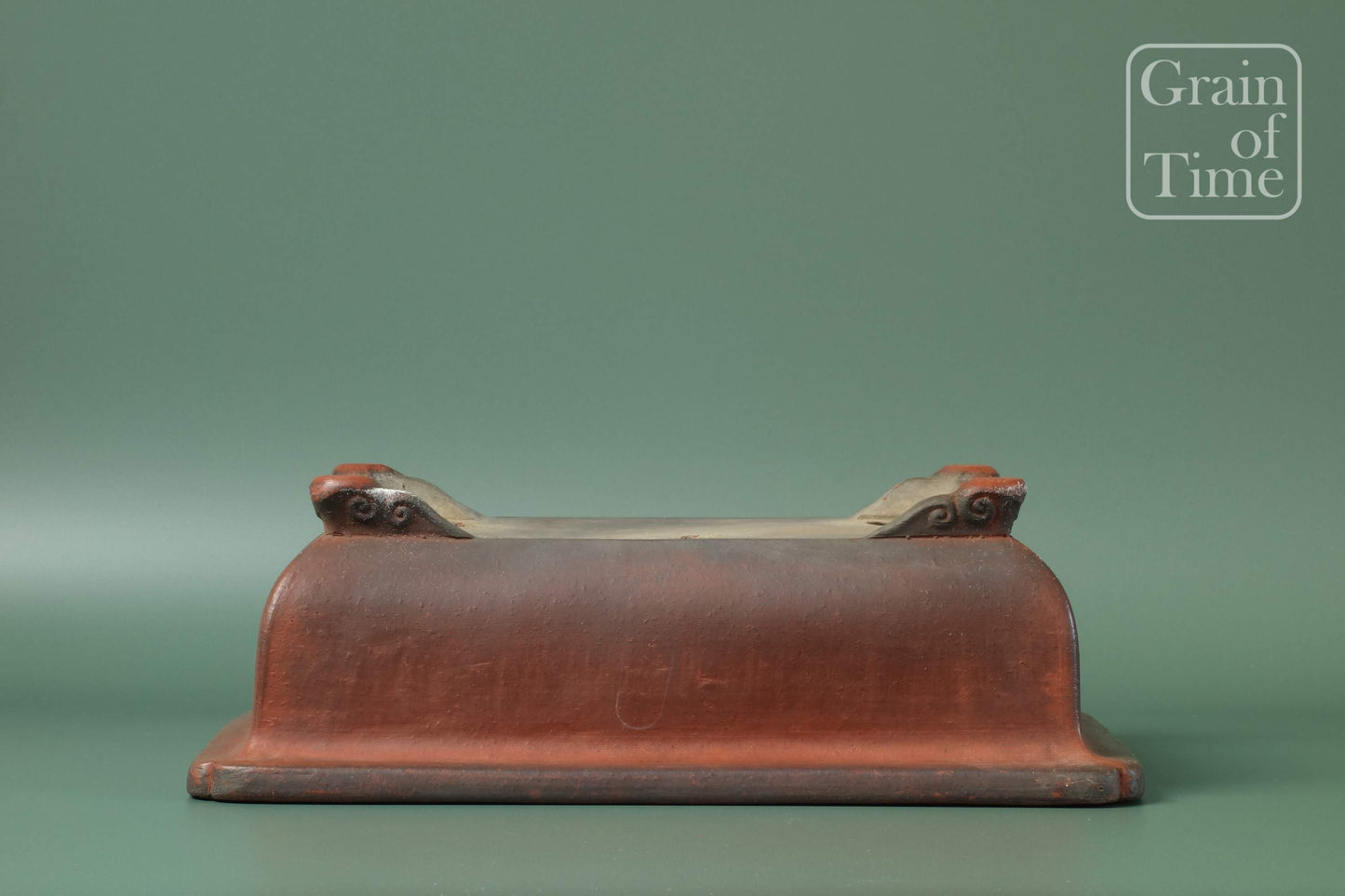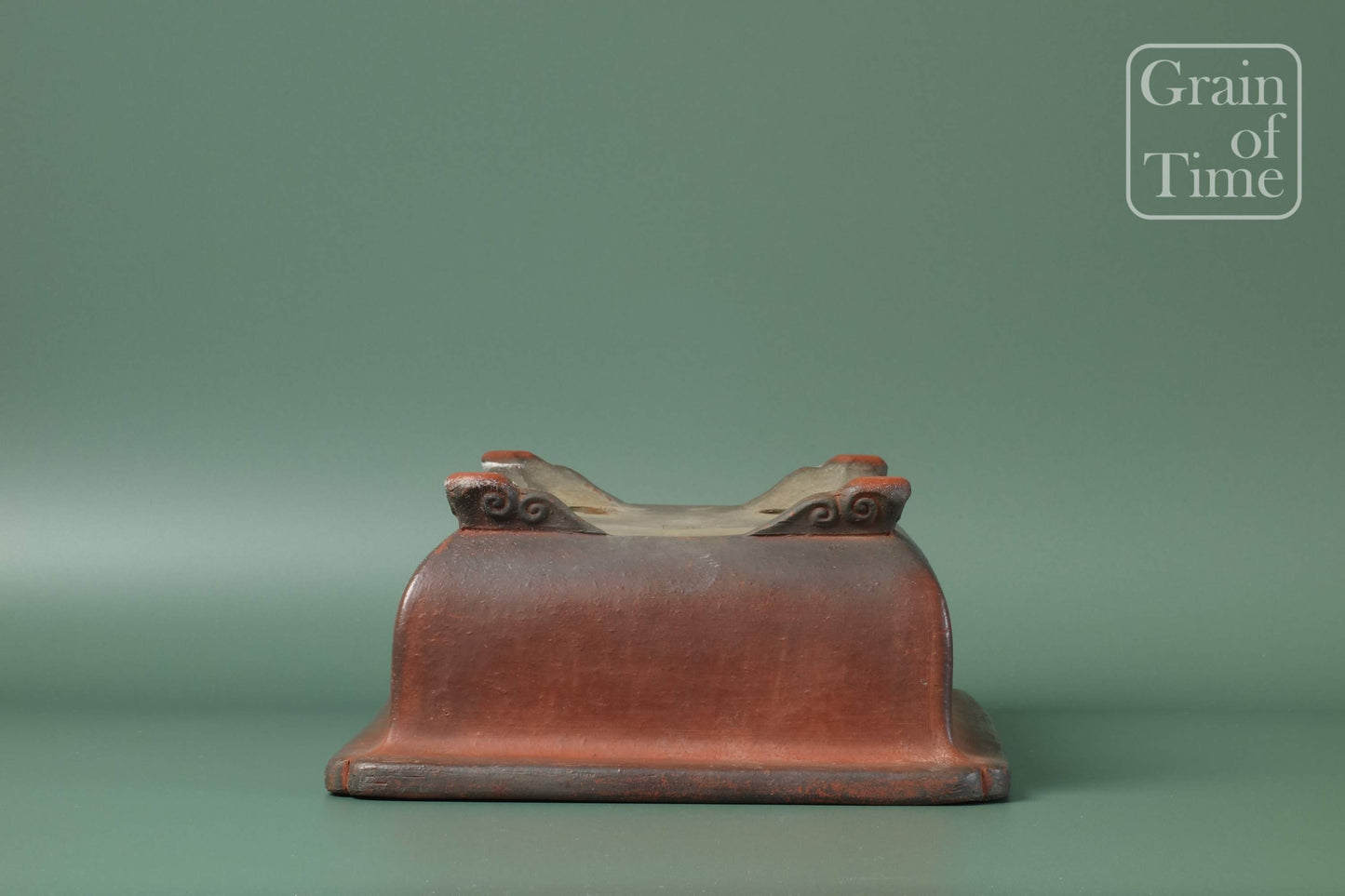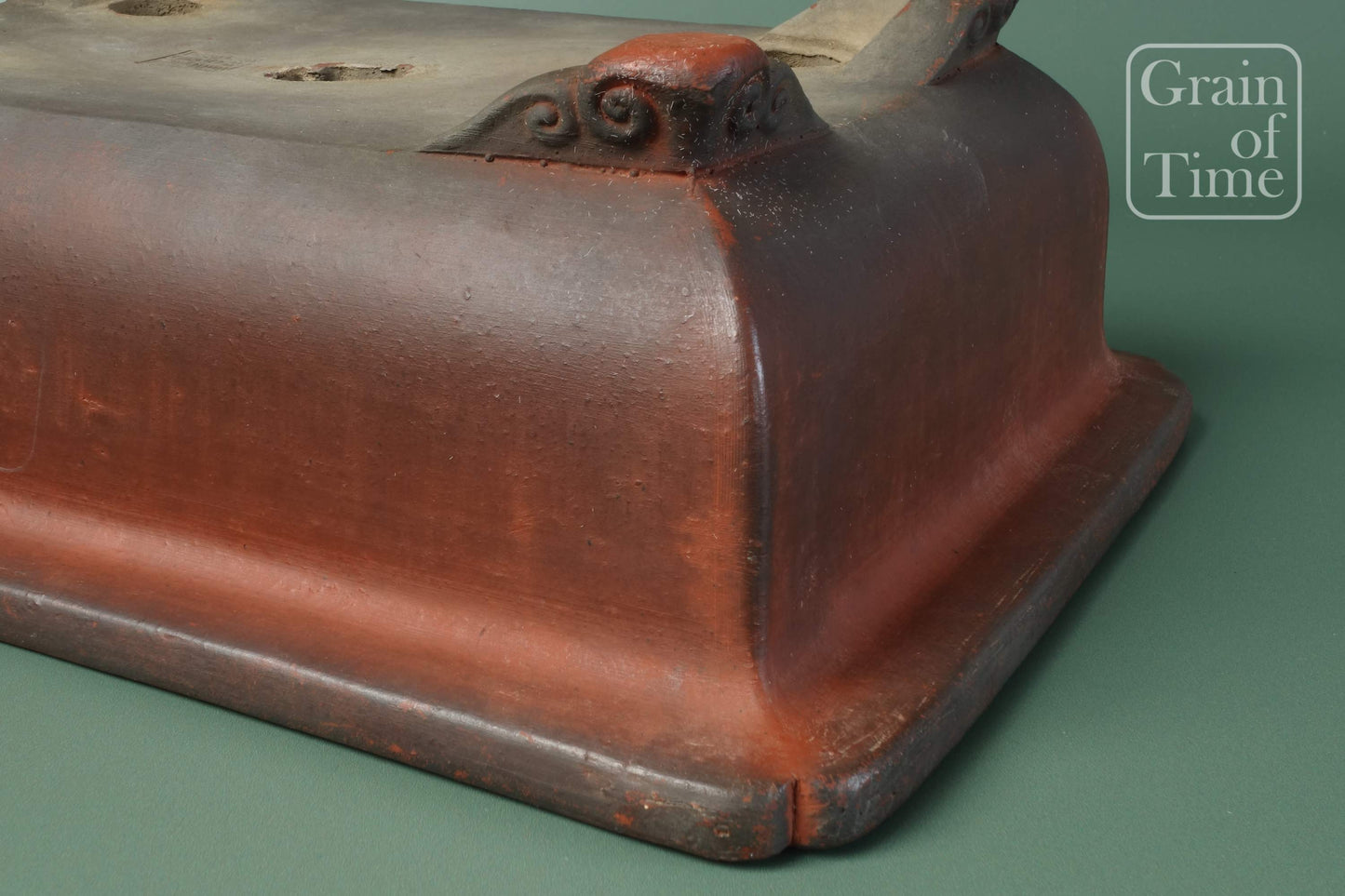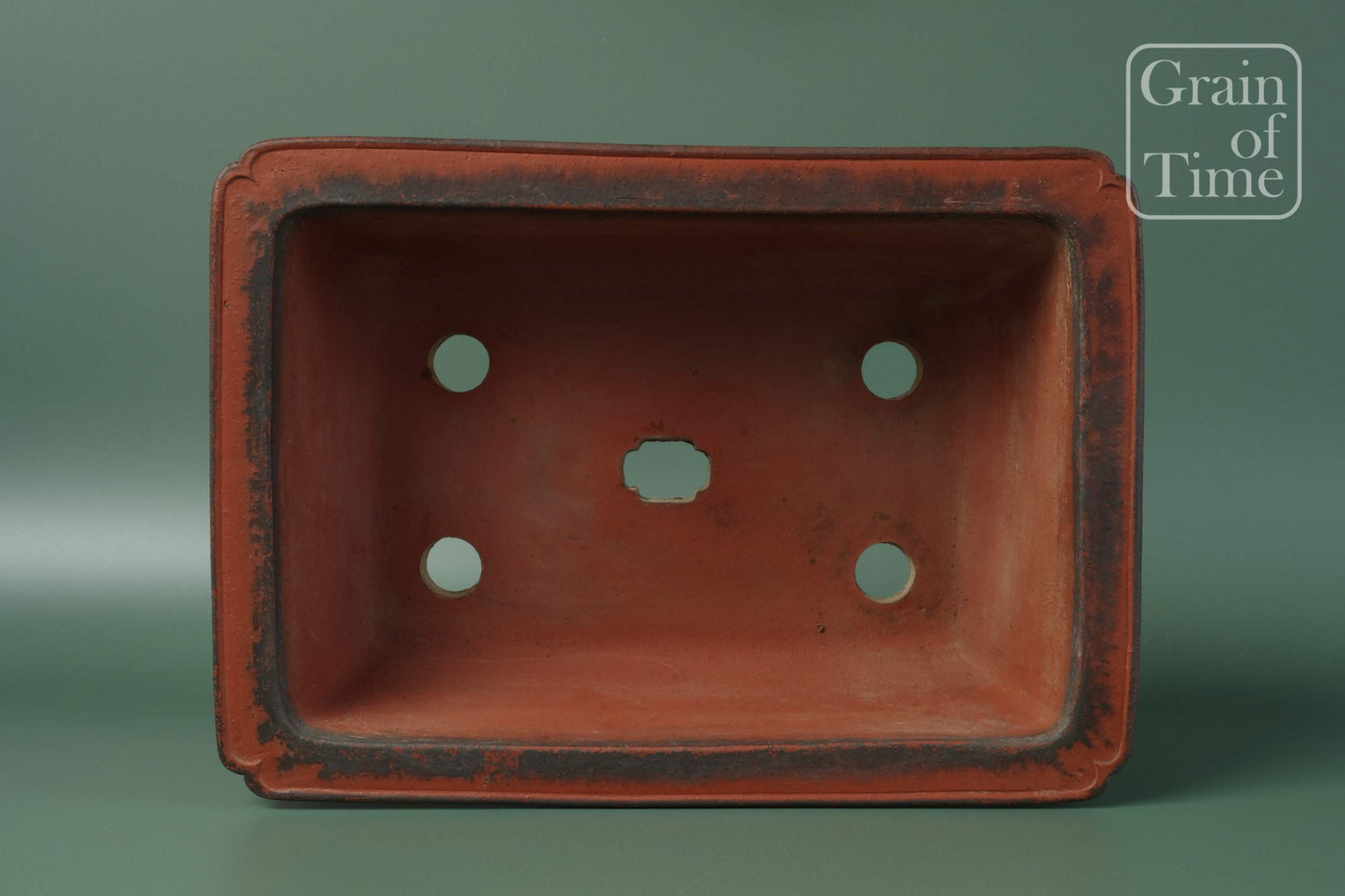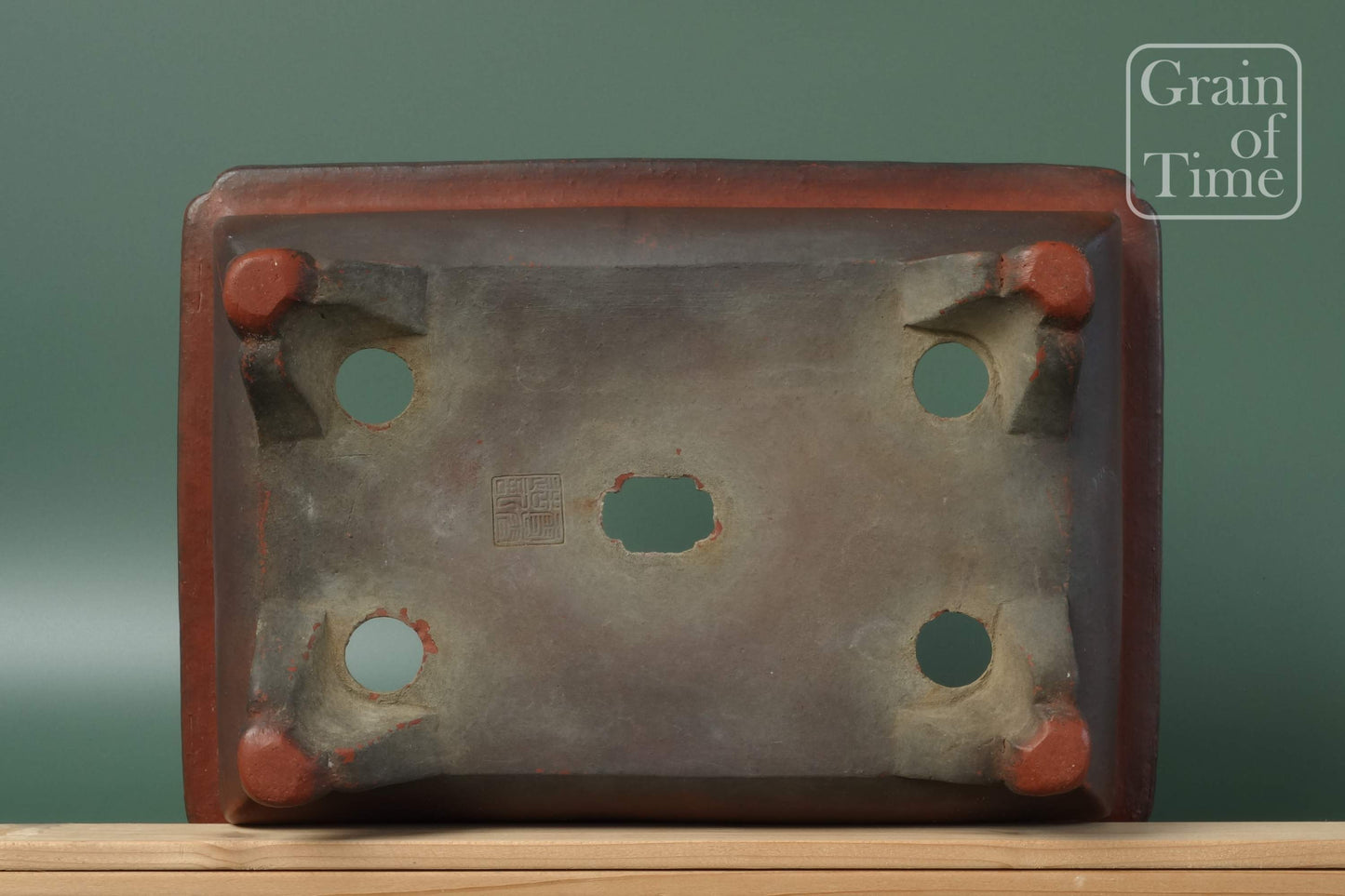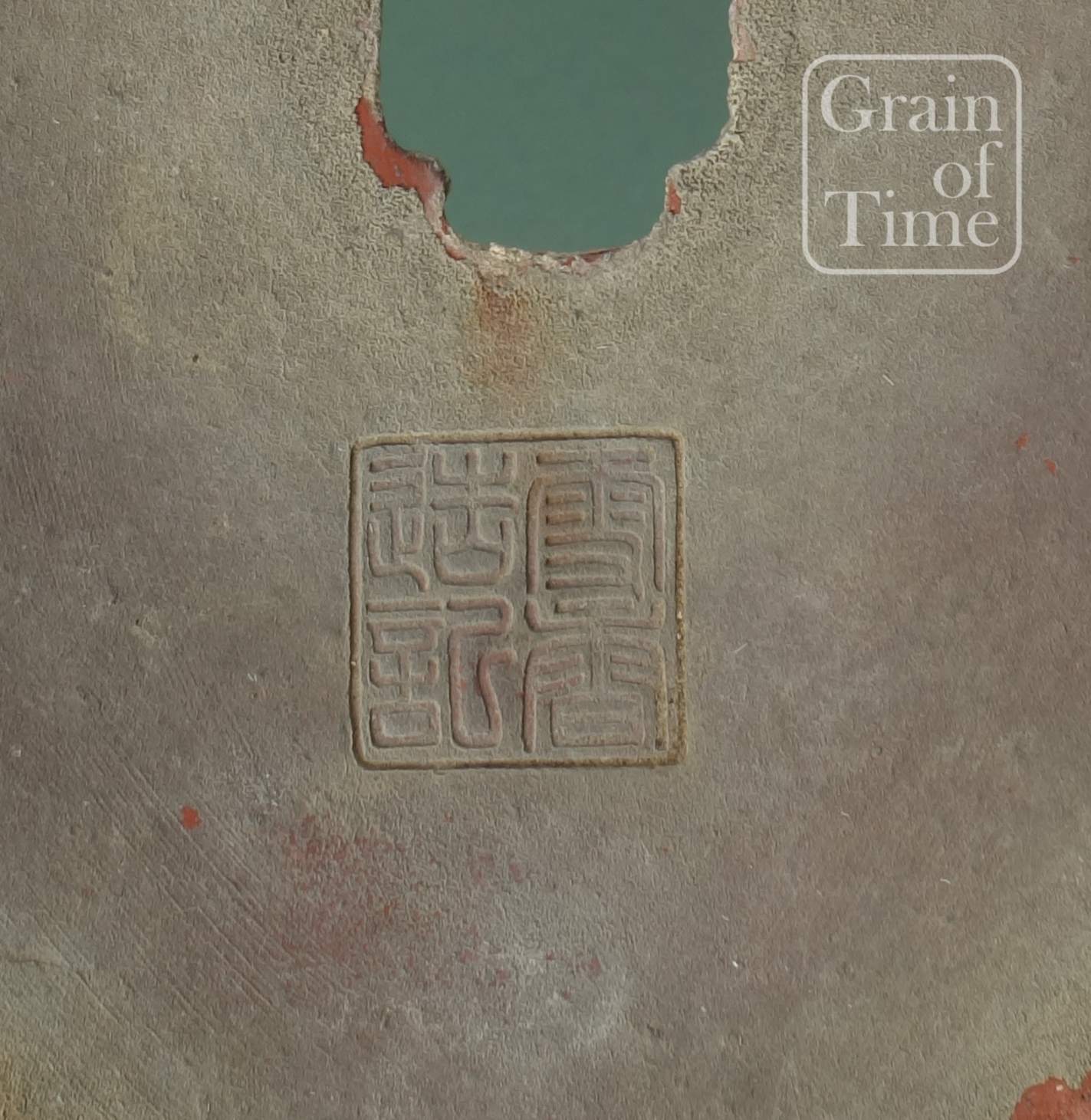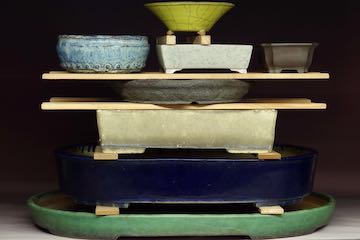Setsukou (Tokoname)
24118: Bonsai Pot by Setsukou (Tokoname) - Taisho era 100yrs+ 12⅞ in (33cm)
24118: Bonsai Pot by Setsukou (Tokoname) - Taisho era 100yrs+ 12⅞ in (33cm)
Regular price
£375.00 GBP
Regular price
Sale price
£375.00 GBP
Unit price
per
Tax included.
Shipping calculated at checkout.
Couldn't load pickup availability
Formal description:
Japanese bonsai pot from the Setsukou kiln of Tokoname. Rectangle, external rim with lip, cloud feet. Seal of Setsukou underneath.
External dimensions:
327 x 233 x 105mm (12⅞ x 9¼ x 4 in)
Internal dimensions:
282 x 187 x 76mm (11⅛ x 7¼ 3 in)
SKU: 24118
Informal information:
What's this, Chinese, Nakawatari? No, it's a very early example of a Tokoname bonsai pot. In the late Meiji and early Taisho era, bonsai began to become popular with the masses in Japan.
Chinese pots had long been favoured by the elite, the Nakawatari period spanned 1800-1911. In Japan, The Meiji era spanned 1868-1912, and was a period of huge modernisation and upheaval, seeing the end of a feudal society (including Samurai) and the beginning of a parliamentary monarchy (similar to the UK) with a constitution.
Tokoname was a well established pottery centre, one of Japans "Ancient Kilns" (which in truth were collections of kilns). With the iron rich clay that fired to maturity at a low temperature that had been used to make architectural and tea wares already for hundreds of years, Tokoname was about to become a centre for bonsai pots.
That's when this pot was made. Sometime between late Meiji and early Taisho (1912-26), about a hundred years ago. Such pots are generalised as Taisho-Toko. This example is from a kiln called 'Setsukou', the clay is typical Tokoname, and would have been fired in a traditional wood-fired "Anagama" kiln.
It was probably mould made and was hand finished. There are plenty of finger marks where it has been smoothed off, and it's interesting to see this and compare with top Chinese Nakawatari wares which are more refined; the Japanese were on still on catch up at this point.
This pot has been well used, and any watering has thankfully not been with hard water. The patina has got to that point where it is flaking off in places, hence the similarity to antique Chinese pieces. So, it has it's place in history, and as we know, Tokoname went on to produce such great artists, we can only look forward and anticipate the quality of a Yamaaki, Koyo or Ikko when they reach this age!
As this is an antique, I would personally be cautious about exposing it to frost and hard, wet winters. It's reached this age and earnt it's patina, it deserves to be protected from the worst of the elements!
Condition: Used, patina, excellent.
Shipping:
Shipping within UK (Except NI and Channel Islands) is free.
I usually ship with Royal Mail, if you prefer DPD or Evri, please add a note to your order or email.
Europe & World - please ask for a quote for shipping. Any import fees are the responsibility of the customer.
Price:
I try to price competitively, reasonable offers are invited, if you've seen something similar and think I'm way off the mark, drop me a message.
UK buyers: Please note import costs when comparing this item with items overseas! These typically comprise: the shipping fee, and, on arrival, you will pay VAT at 20%, possibly import duty and a customs clearance fee. My items are simply the price advertised plus optional UK shipping.
Returns:
I guarantee that the pot condition is as described and will take it back if you aren't happy with it. Items are returned at the buyers cost & risk. Please be aware that most UK couriers will NOT insure ceramic items, however it is certainly easier than returning overseas. Please get in touch if you want to return an item.

